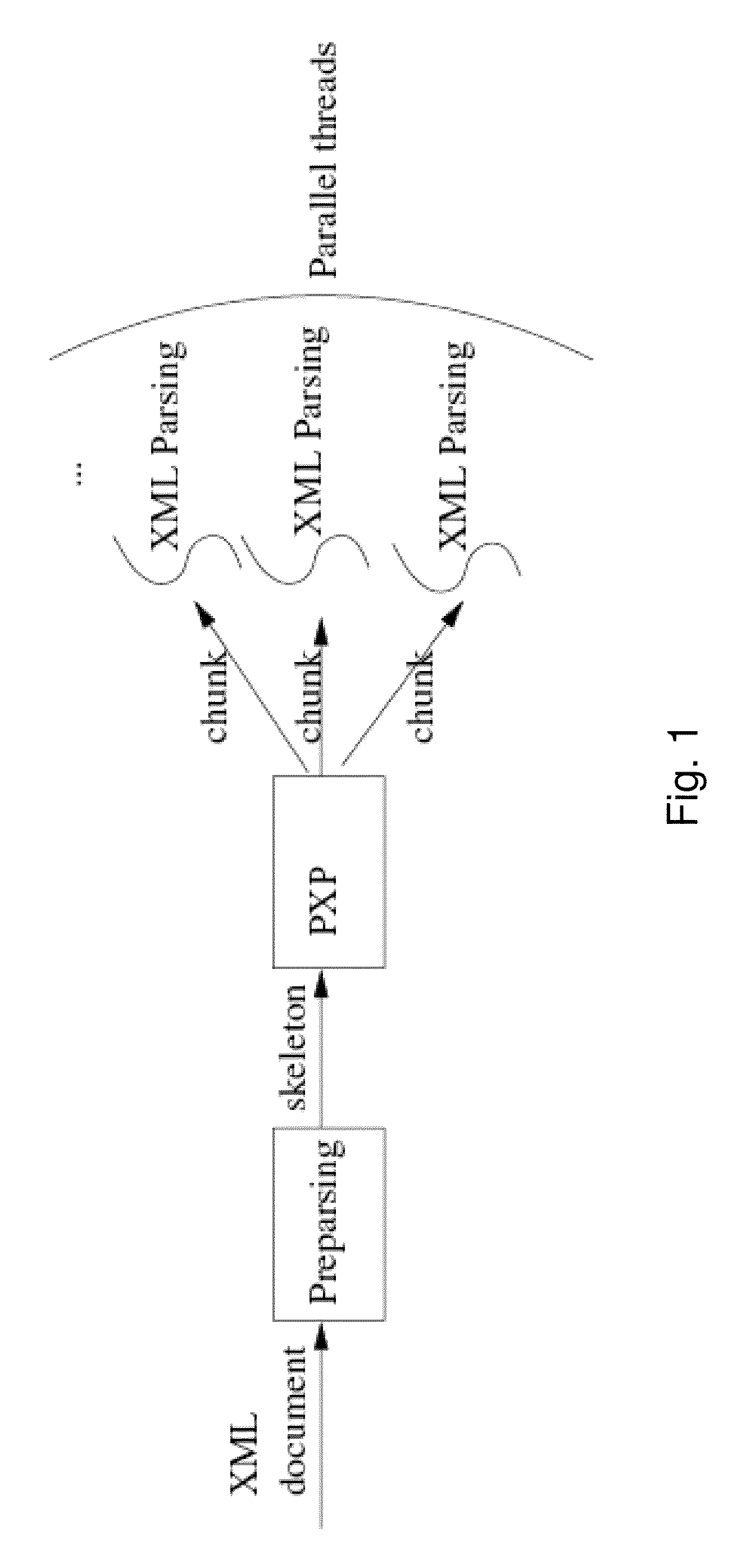Parallel approach to XML parsing
a parallel approach and parsing technology, applied in the field of parallel approach to xml parsing, can solve the problems of difficult integration, difficult pipelining of software, difficult to implement well, etc., and achieve the effect of improving xml parsing performan
- Summary
- Abstract
- Description
- Claims
- Application Information
AI Technical Summary
Benefits of technology
Problems solved by technology
Method used
Image
Examples
example 1
[0128]Experiments were performed to measure the performance of the preparsing, and then experiments were performed to measure the performance improvement and the scalability of the parallel XML parsing (static and dynamic partition) algorithm over the different XML documents.
[0129]The experiments were executed on general purpose computer which has two 2 dual-core AMD Opteron processors and 4 GB of RAM, running a Linux 2.6.9 operating system. Every test was run five times to get the average time and the measurement of the first time is discarded, so as to measure performance with the file data already cached, rather than being read from disk. The programs are compiled by g++ 3.4.5 with the option -O3. The libxml2 library employed is version 2.6.16.
[0130]During initial experiments, poor speedup was observed during a number of tests that presumably should have performed well. The was attributed to lock contention in malloc( ). To avoid this, a simple, thread-optimized allocator was wri...
example 2
[0145]Experiments were run on a Sun Fire T1000 machine, with 6 cores and 24 hardware threads (CMT). Most large XML documents, particularly in scientific applications, are relatively broad rather than deep, also they typically contain one or two large arrays and the structure tends to be shallow. Hence a large XML file was selected for analysis containing molecular information representing the typical structural shape of XML documents in scientific applications. This was based on XML documents obtained from the Protein Data Bank [19]. It consists of two large arrays representing the molecule data as well as a couple elements for the molecule attributes. To obtain the different sizes, the molecule data part of the documents were repeated.
[0146]Every test was run ten times to get the average time and the measurement of the first time is discarded, so as to measure performance with the file data already cached, rather than being read from disk. The programs are compiled by Sun Workshop ...
PUM
 Login to View More
Login to View More Abstract
Description
Claims
Application Information
 Login to View More
Login to View More - R&D
- Intellectual Property
- Life Sciences
- Materials
- Tech Scout
- Unparalleled Data Quality
- Higher Quality Content
- 60% Fewer Hallucinations
Browse by: Latest US Patents, China's latest patents, Technical Efficacy Thesaurus, Application Domain, Technology Topic, Popular Technical Reports.
© 2025 PatSnap. All rights reserved.Legal|Privacy policy|Modern Slavery Act Transparency Statement|Sitemap|About US| Contact US: help@patsnap.com



